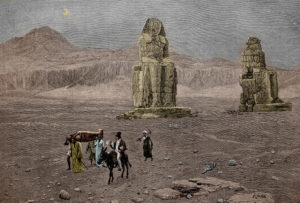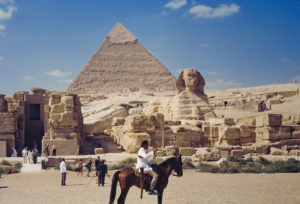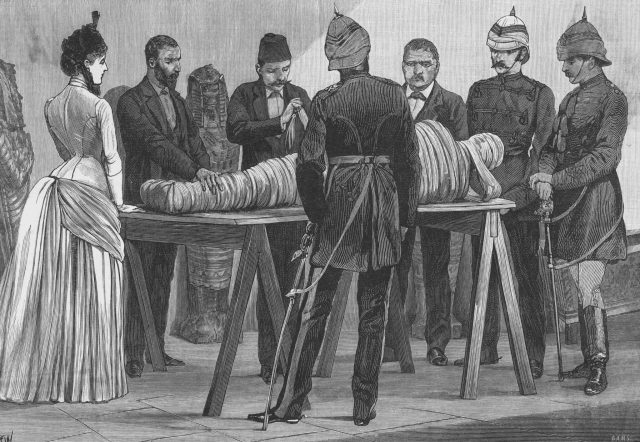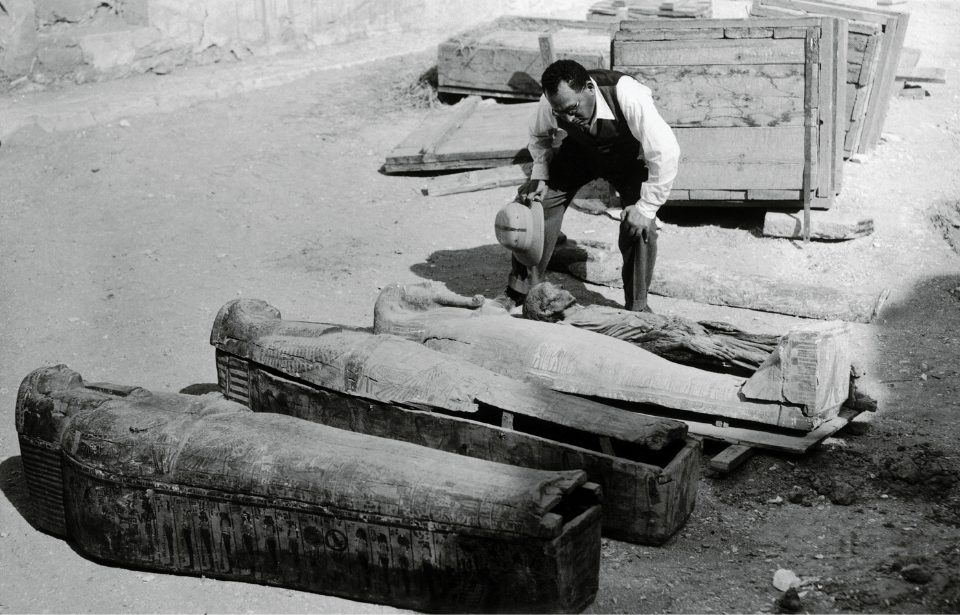Here’s an extremely unsettling fact: not long ago, Europeans were cannibals. Throughout modern European history, Egyptian mummies and other forms of preserved human flesh were common medicinal ingredients. Here is the full story on the gruesome practice of corpse-eating.

It is pretty common knowledge that Europeans were once fascinated by mummies. Egyptomania became the craze throughout Europe in the nineteenth century, starting with the Napoleonic conquest of Egypt. If someone was looking for an exciting night out, one could attend a mummy unwrapping party. These unwrapping parties would be held in public spaces and would bring in thousands of spectators. Egyptian mummies would often end up in a Victorian cabinet of curiosities, next to a “mermaid” or a whale bone in the nineteenth century.
It is also fairly well known that artists would often grind up mummies to create a paint shade known as “Mummy Brown.” This shade of brown was good for mixing and was commonly used to show tinted glass or shadows in paintings.
However, Europeans had been fascinated with mummies since essentially the 12th century. The reason for this fascination with mummies and human flesh didn’t come from a “morbid” place, rather a place of healing. Europeans believed that human flesh – including bones, blood, and fat- could be ingested and used as medicine.

It was commonly believed that the remains of a body contained the person’s spirit that the remains belonged to. As such, if an individual ingested these remains, they would receive the strength of that person. Priests, scientists, and even royalty would grind up different mummy parts, and combine them with honey, chocolate, or alcohol and ingest the concoction.
The practice peaked in the 16th and 17th centuries throughout Europe. Initially, the mummy was crumbled up to help stop internal bleeding. Other body parts being ingested soon followed. The human skull was crushed into a powder and taken to help cure head ailments. It was an added bonus was if there was moss growing on the skull in question. This moss (called Usnea) would also be crushed up, and it was thought to help cure nosebleeds and epilepsy.
It wasn’t just ancient mummies that were ingested. Human fat was often used to help treat external skin conditions, including open wounds. Obviously, mummies didn’t have any skin or fat left, so these would often be harvested from the recently deceased.

Blood was also thought to be an important remedy. Again, because mummies obviously no longer contained any bodily fluids, people went through great lengths to get their hands on some fresh blood. A Swiss physician practicing in the 16th-century named Paracelsus believed that blood contained the “vital force” of the human that it had belonged to. Fresh blood was considered the best for curing blood ailments, and some of Paracelsus’s followers even suggested taking blood from a living body.
More from us: Female Mummy Hunters and the Remarkable Impact They Made
There were two primary reasons why people stopped ingesting mummies. Firstly, people began to realize that the practice was gross and had no health benefits. However, the mummy trade was also drying up, making it much more difficult for people to get their hands on mummies and corpses. The last time a mummy appeared as medicine was at the start of the twentieth century in a German medical catalog.
